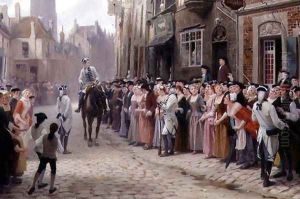Pierre Leon Horace Ruel Paintings
Pierre Leon Horace Ruel, more commonly known as Paul Durand-Ruel, was a pivotal French art dealer who is best remembered for his instrumental role in the rise and promotion of the Impressionists. Born on October 31, 1831, in Paris, France, Durand-Ruel was initially poised to enter the family's stationery and art supplies business. However, his passion for art and keen eye for emerging talent led him down a different path, transforming him into one of the most influential art dealers of his time.
Durand-Ruel's career took a significant turn in the 1860s when he began to champion the works of artists who were pushing the boundaries of the art world. These artists, who would later be known as the Impressionists, included Claude Monet, Pierre-Auguste Renoir, Camille Pissarro, and Edgar Degas, among others. Durand-Ruel was not just a dealer for these artists but an ardent supporter, buying their works when no one else would and tirelessly promoting them to collectors and critics alike. His faith in these artists was not immediately rewarded; the radical departure of Impressionism from traditional art forms was initially met with skepticism and ridicule.
Despite facing financial hardships and skepticism from his peers, Durand-Ruel's unwavering belief in the Impressionist movement eventually paid off. He is credited with organizing the first Impressionist exhibition in London in 1870, a crucial step in gaining international recognition for the artists. Durand-Ruel's innovative strategies, such as hosting solo exhibitions for artists and developing an international network of buyers, were revolutionary at the time and contributed significantly to the commercial success of the Impressionists.
Durand-Ruel's legacy extends beyond his financial and promotional support for the Impressionists. He is recognized for changing the landscape of the art market, introducing practices that modernized art dealership and cultivated a broader appreciation for contemporary art. Paul Durand-Ruel passed away on February 5, 1908, in Paris, leaving behind a legacy that had forever changed the trajectory of Western art. His foresight and dedication helped to ensure that Impressionism was not just a fleeting artistic experiment but a pivotal movement that would influence generations of artists to come.
